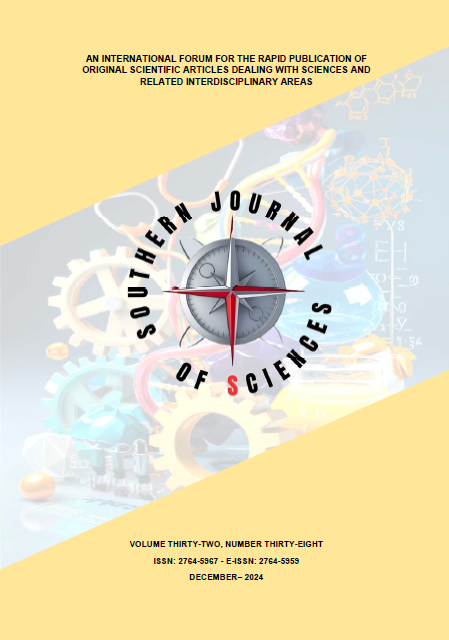TREATMENTS FOR ACUTE LYMPHOBLASTIC LEUKEMIA: A COMPARISON BETWEEN TISAGENLECLEUCEL AND CLOFARABINE
Background: Acute lymphoblastic leukemia (ALL) is a heterogeneous hematological malignancy predominantly affecting individuals under 20 years of age. Traditional chemotherapy, such as clofarabine, has shown efficacy; however, novel immunotherapeutic strategies like tisagenlecleucel (Kymriah®) have significantly altered the treatment paradigm. Aim: This study aimed to perform a comparative analysis of tisagenlecleucel, a CAR-T cell therapy, and clofarabine, a second-generation purine nucleoside analog, evaluating their mechanisms of action, therapeutic benefits, limitations, and clinical applicability across diverse patient populations. Methods: A systematic comparative evaluation was conducted, encompassing pharmacological characteristics, mechanisms of action, treatment protocols, efficacy, safety profiles, and clinical indications of both agents. The analysis considered pharmacokinetic and pharmacodynamic data and included patient demographic variables. Results: Tisagenlecleucel demonstrated high efficacy in refractory B-cell ALL, with durable responses and a blood half-life of 128 days, but with notable immune-related adverse effects such as cytokine release syndrome. Clofarabine, effective across a broader patient population, acts via multiple antitumor mechanisms but carries significant toxicity risks, including infection and sepsis. Discussion: The therapies present distinct clinical profiles: tisagenlecleucel offers targeted immunotherapy with high specificity but requires specialized infrastructure and management of immune toxicities. Clofarabine is more widely accessible and applicable, but is associated with conventional chemotherapy-related side effects. Treatment accessibility and cost differ markedly between the two. Conclusions: Therapy selection should be personalized based on patient-specific factors and institutional resources. Tisagenlecleucel is ideal for pediatric and young adult patients with relapsed/refractory B-cell ALL in CAR-T-capable centers, while clofarabine remains a viable option for broader ALL populations, particularly when genetic therapies are not feasible. Further research is needed to optimize therapeutic strategies and improve access to advanced treatments.
Read ArticleINTERVIEW WITH DEPUTY VICE CHANCELLOR DR. O. A. OMOTESHO, UNIVERSITY OF ILORIN, NIGERIA (ENGLISH VERSION)
Background: The University of Ilorin, founded in 1975 in Nigeria, has evolved from 3 to 16 faculties, becoming the country's most sought-after institution for the past two decades. Aims: To document the institutional evolution, identify the most demanded programs, assess scientific output, examine internationalization strategies, and understand strategic development objectives. Methods: Structured interview with Vice-Chancellor Dr. Olubumi Abayomi Omotesho, following a standardized protocol covering historical, academic, scientific, and strategic aspects of the institution, under Creative Commons license format. Results: The university expanded to 16 faculties in 49 years. The most demanded programs are Medicine and Nursing, followed by Pharmacy, Law, Engineering, and Accounting. Areas with the highest scientific output: Medicine, Biological/Agricultural Sciences, and Engineering. It offers 340 postgraduate programs with approximately 7,523 students. There is a dedicated infrastructure for internationalization, with plans for international accommodations. Discussion: The predominance of healthcare courses reflects global employability trends. Research aligned with Sustainable Development Goals demonstrates a contemporary vision. The institutional goal (number one in Nigeria, top 10 in Africa, top 500 globally) shows a measurable strategic approach. Commitment to internationalization aligns with global education trends. Conclusions: The institution exemplifies an evolving African university focused on academic excellence, scientific relevance, and internationalization. The prioritization of student-centered development, clear positioning goals, and international collaboration initiatives establish solid foundations for its contribution to regional and global knowledge.
Read ArticleDETECTION OF EPSTEIN-BARR VIRUS (EBV) IN WOMEN WITH BREAST CANCER IN IRAQ USING IN-SITU HYBRIDIZATION AND IMMUNOHISTOCHEMICAL TECHNIQUES
Background: The Epstein-Barr virus (EBV) has recently been identified in human breast cancer globally, potentially contributing to the initiation and progression of this malignancy, as well as gastric cancer, nasopharyngeal carcinoma, and bladder cancer. It has been newly associated with breast cancer. Globally, breast cancer affects more women than any other type of cancer. In Iraq, the prevalence of breast cancer is comparable. Aims: The study examined Iraqi women diagnosed with invasive ductal carcinoma (IDC) and invasive lobular carcinoma (ILC) to detect Epstein-Barr Virus Nuclear Antigen-1 (EBNA-1) and encoded RNA (EBER). Methods: A total of 50 formalin-fixed paraffin-embedded tissues from invasive ductal carcinoma (IDC) (92%) and invasive lobular carcinoma (ILC) (8%) biopsy samples constituted the case group, while 30 formalin-fixed paraffin-embedded tissues from non-cancerous breast tissue served as the control group. The presence of Epstein-Barr virus protein (EBER) in breast tissue was assessed using immunohistochemistry (IHC) and chromogenic in situ hybridization (CISH) methods. Results: EBER RNA signals were found in 31 (62%). EBER RNA signals were seen in 3 (10%) control group participants. Significant differences (P<0.04) were seen in EBV EBER RNA positive signals among study groups. Immunohistochemistry showed nuclear brown staining in 34 (68%) breast cancer patients. Control group: 3 (10%). Discussion: The research identified a statistically significant correlation between EBV positivity and breast cancer among Iraqi women, especially concerning invasive ductal carcinoma. The results corroborate previous reports of elevated EBV levels in malignant breast tissues relative to controls. Although detection approaches such as CISH and IHC provide complementary insights, additional studies are needed. Conclusions: The study concludes that EBNA-1 and EBV EBER RNA were overexpressed in our population group.
Read Article